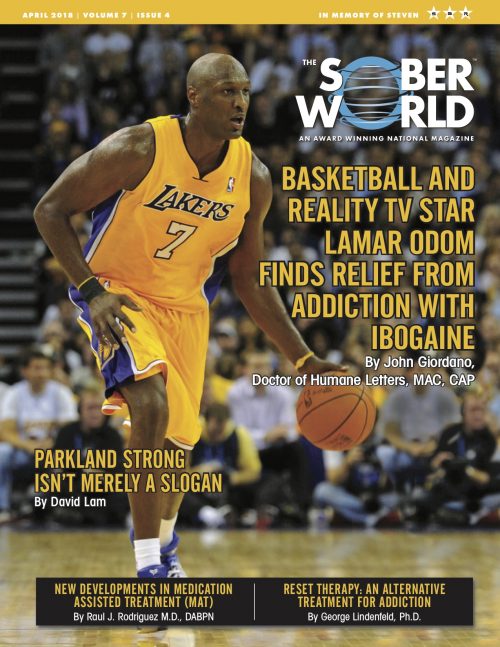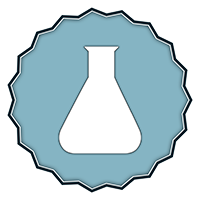Basketball Legend & TV Reality Star Lamar Odom Finds Relief From Addiction With Ibogaine
Lamar Odom performance on the basketball court earned him honors any athlete – young or old, professional or amateur – regardless of their sport would proudly display in their trophy case. Odom’s Olympic team won bronze in 2004 and he won a gold medal in the FIBA World Championship (World Cup) in 2010. Odom won two NBA championships in 2009 and 2010 with the LA Lakers and was named the NBA Sixth Man of the Year in 2011. Mitch Kupchak, the Lakers’ general manager, said of Lamar, “he is the most popular player in our locker room.”
All of his success on the court brought him fame in the sports world; however it was his marriage to Khloé Kardashian in 2006 that put him on TV screens in the living-rooms of millions of people who didn’t know him from his athletic achievements. His appearances on “Keeping Up with the Kardashians” led to his own reality show “Khloé & Lamar.” On the surface everything seemed just fine – a couple living a storied life that most could only dream of. That is of course before Lamar’s off camera secret life was revealed on October 13, 2015 when he went into a coma and placed on life support in a hospital because of a drug overdose.
Odom is not the first national celebrity to fall from grace and certainly won’t be the last. If anything it shows how this disease does not discriminate – it can happen to anyone of us at any time. Lamar survived his near death experience. In the aftermath, family members said he was firmly on the road to recovery; but close friends latter learned otherwise.
Even after a brush with death and addiction treatment, Odom continued to experience drug cravings and desires – it happens more than most realize. Believing he could not say no, Lamar recently connected with a good friend of mine Mike ‘Zappy’ Zapolin for help. Over the years, Mike and I have spent countless hours together discussing the merits of alternative therapies for addiction. He produced the documentary film with Deepak Chopra and Michelle Rodriquez titled: “The Reality of Truth” that has millions of views on Youtube.
Zappy correctly directed Lamar to Ibogaine therapy. They had to go on of the country for treatment because Ibogaine is a schedule 1 drug in the US, whereas most countries do not specifically prohibit it or regulate it including Mexico and Canada. To put this into context, Ibogaine and other drugs including Marijuana were swept into this classification during a time of social unrest in the US. It was in the late 60’s near the pinnacle of Hippie movement when Government officials were reaching for anything to quell the uprising. Aside from the CIA experiments at the Federal Narcotics Hospital in Kentucky in the 50’s, no formal FDA approved studies had been conducted at the time Ibogaine was banned to determine if it had any medicinal value whatsoever.
Ibogaine is a natural occurring substance in the root bark of the Tabernanthe iboga shrub, a perennial rain-forest plant found predominately in Western Central Africa. For hundreds of years, Ibogaine has been safely used in religious ceremonies performed by Bwiti practitioners in Gabon, Africa to promote radical spiritual growth and resolve pathological problems. They also use it in rite of passage ceremony, initiation rites and acts of healing.
My first hands-on exposure to Ibogaine was in the mid 1990’s when Dr. Deborah Mash asked me to join her staff. Dr. Mash, who at the time was a Professor of Neurology at the University of Miami, School of Medicine, was conducting clinical trials of Ibogaine on the West Indies Island of St. Kitts. This ended up to be the only clinical trials ever approved by the FDA. Dr. Mash is one of the world’s leading authorities on Ibogaine. She has made it her life’s work to understand the molecule and explore all of its therapeutic values.
It was on St. Kitts under Dr. Mash’s tutelage where I, like most people first exposed to Ibogaine, was absolutely floored by what I’d seen. Part of my responsibilities included preparing the patient for the treatment. This afforded me a terrific opportunity to get to know them and learn about their drug abuse history. What I’d learned was that nearly all the people had been in treatment before and most had been through treatment multiple times. These people were desperate chronic relapsers who had been abusing drugs for years – some for decades – starting as early as 14 years-old. I couldn’t help but to think that for many of the people I was preparing for treatment that this was their last vestige of hope for recovery.
During Ibogaine treatment, the patients go into what many call an ‘awaken dream state.’ For lack of a better definition, I call it the convergence of the conscious and unconscious minds.
Ibogaine is an organic psychoactive substance that induces hallucinogenic effects. In saying this many people become discomforted and immediately stigmatize Ibogaine because of its association with LSD. It’s like a boomerang effect where we automatically group similar entities together regardless of their differences. I’ve personally experienced both Ibogaine and LSD – I can tell you the experiences are worlds apart. Albeit Ibogaine is intense, it not addictive and does not produce the wily LSD experience described to us in the 60s. Ibogaine tends to be introspective while other substances such as LSD tend to cause visual hallucinations in a person’s surroundings.
Everyone’s Ibogaine experience is different, but most say they found themselves on a transcendent journey back in time, often to their childhoods, where they observe critical parts of their lives from a third person perspective. One patient told me it was like watching a movie of his life. It’s like a ‘trip down memory late’ where a person has the strength to come to grips with all the painful emotions swept under the carpet and forgotten so many years ago.
Odom had a similar experience. He mentioned he spoke with his mother, who died of colon cancer when he was 12 years-old, and to his grandmother who raised him. Lamar also mentioned to Zappy that “I realize now the bad decisions I have made in life.”
This admission was a first for Odom, but fairly common in Ibogaine therapy. Once a patient was awake from treatment, it was my responsibility to sit down with them to discuss their visions and help interpret what they meant. This is a critical aspect of treatment that maximizes the experience. From this vantage point I found that, more times than not, Ibogaine therapy provides individuals with a crystal clear view of bad choices they’ve made throughout their life that contribute to the root of their addiction.
There is another important aspect of Ibogaine therapy that Lamar and everyone I treated in St. Kitts experienced – no withdrawal symptoms and loss of cravings and desires to do drugs. The exact mechanisms continue to elude researchers and scientists, but it is a fact that administered correctly by trained medical professionals, Ibogaine ‘interrupts addiction’ – it essentially reset the brain to pre-addiction settings. Consequently, the patient does not experience the pain commonly associated with drug withdrawal nor do they crave or desire drugs after treatment.
If presiding addiction treatment protocols provide a window to recovery as any honest addiction treatment practitioner will tell you, Ibogaine opens an airport hanger door. It is that big.
However, Ibogaine has a shelf-life in the system that varies. For some people it effects begins to wear off in about 30 to 120 days while others it can be years. There is no rhyme or reason to it, it just occurs at different rates in everyone.
“It’s a great day to be alive!” – Lamar Odom two days after Ibogaine treatment.
Coming out of Ibogaine treatment most people feel empowered like they can accomplish anything and everything is possible. Certainly you don’t want to put a cork in that bottle, but I feel as though it is imperative to channel that emotion and sentiment in the right direction because it has the potential to fade away in a short period of time. This is all the more reason to get into recovery treatment immediately after taking Ibogaine.
Throughout my 33 plus years treating addiction I’ve treated hundreds of individuals immediately after Ibogaine and can tell you first hand that it is light-years ahead of prevailing protocols. It is like treating a person before their addiction; someone who is alert, cognizant and eager to move forward with their life in a positive and worthwhile way.
However, even with all of Ibogaine’s many putative medical values, it is not without risk. People have died in Ibogaine treatment. It is because of the underground environment many clinics operate in today and the lack of regulation, that it is difficult to put a fine point on this statistic. It is known that in many of the reported cases there were complications due to pre-existing conditions such as heart and/or liver disease, another drug in the patients system and other complexities that were the cause of death. It is also important to note that the number of Ibogaine related deaths are in no way even remotely close in size or scope to the more than 600,000 avoidable drug overdose deaths in the US between 2000 and 2016.
Is Ibogaine effective in treating addiction? In a recent interview Dr. Mash had observed, “We did 3-month, 6-month, and 1-year follow-ups and were estimating that between 40% and 50% of our patients had remained clean after treatment. If you have one out of two people being a success, that is amazing.”
Ibogaine is not recovery, but rather one giant step towards recovery. I’m looking forward to working with Zappy and Lamar on his recovery. Zappy has been filming Odom’s Ibogaine experience and will be producing a documentary that will be available in the very near future.
John Giordano, Doctor of Humane Letters, MAC, CAP, is the founder of ‘Life Enhancement Aftercare & Chronic Relapse Recovery Center,’ an Addiction Treatment Consultant, President and Founder of the National Institute for Holistic Addiction Studies, Chaplain of the North Miami Police Department and is the Second Vice President of the Greater North Miami Beach Chamber of Commerce. He is on the editorial board of the highly respected scientific Journal of Reward Deficiency Syndrome (JRDS) and has contributed to over 65 papers published in peer-reviewed scientific and medical journals.


